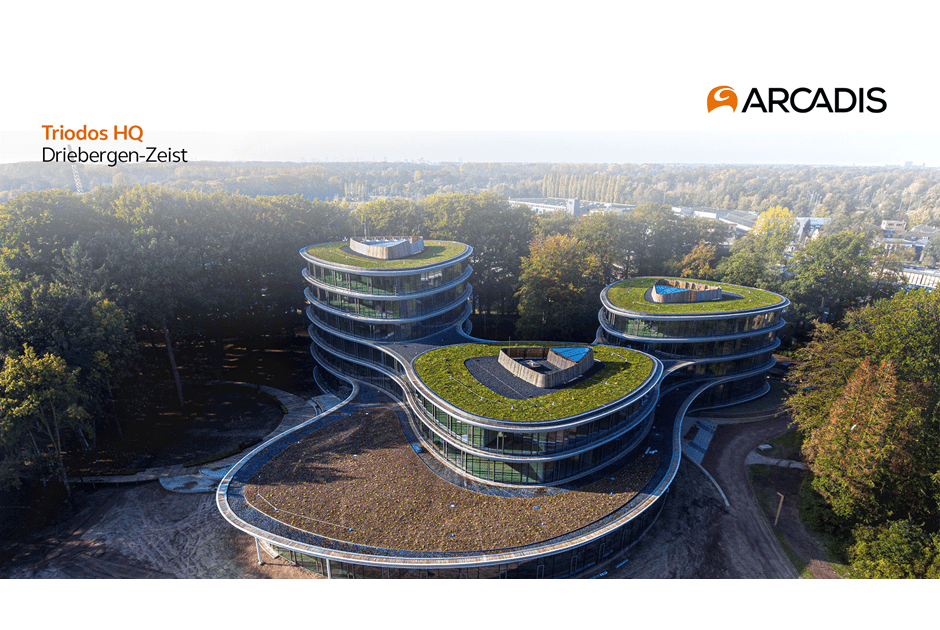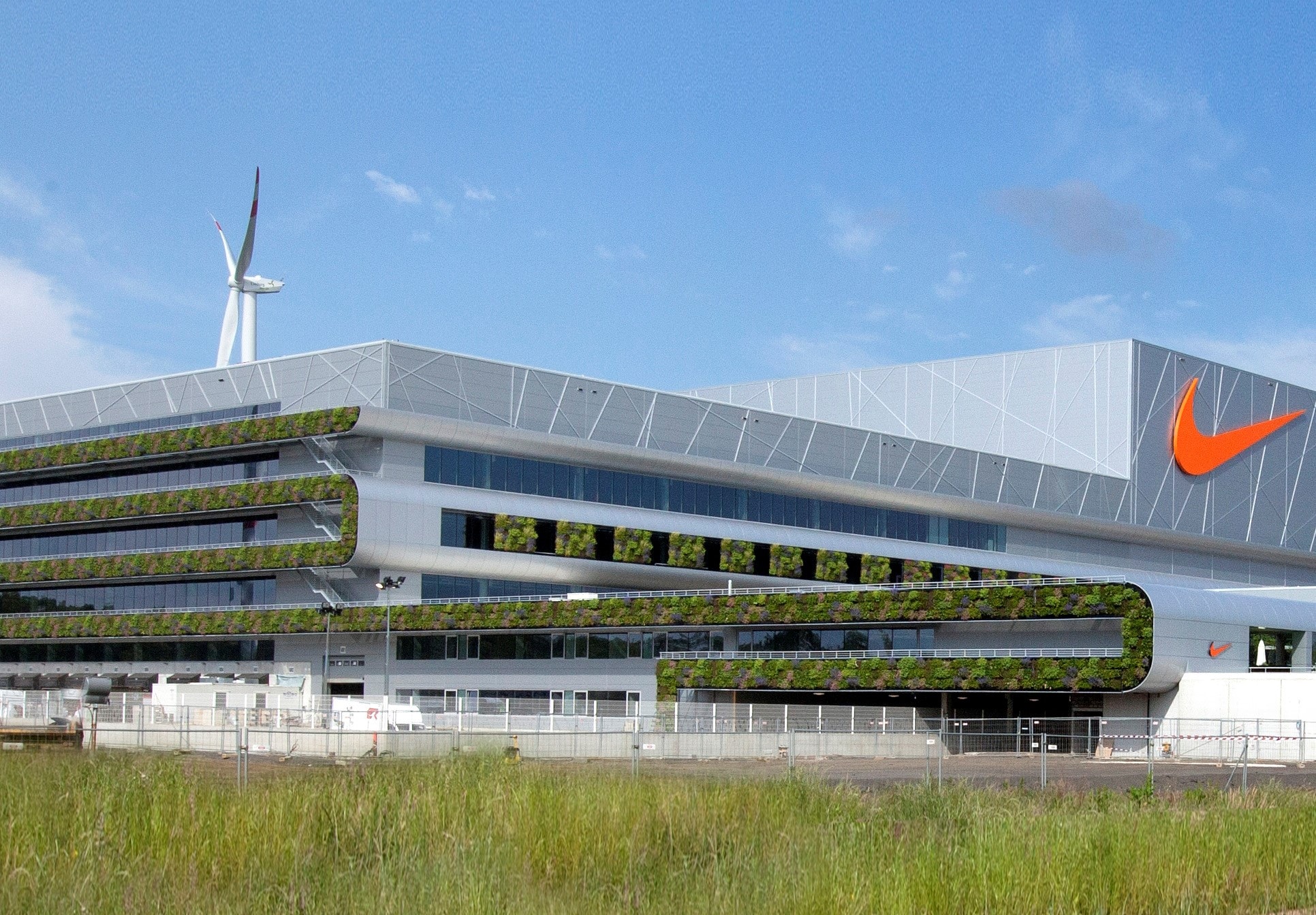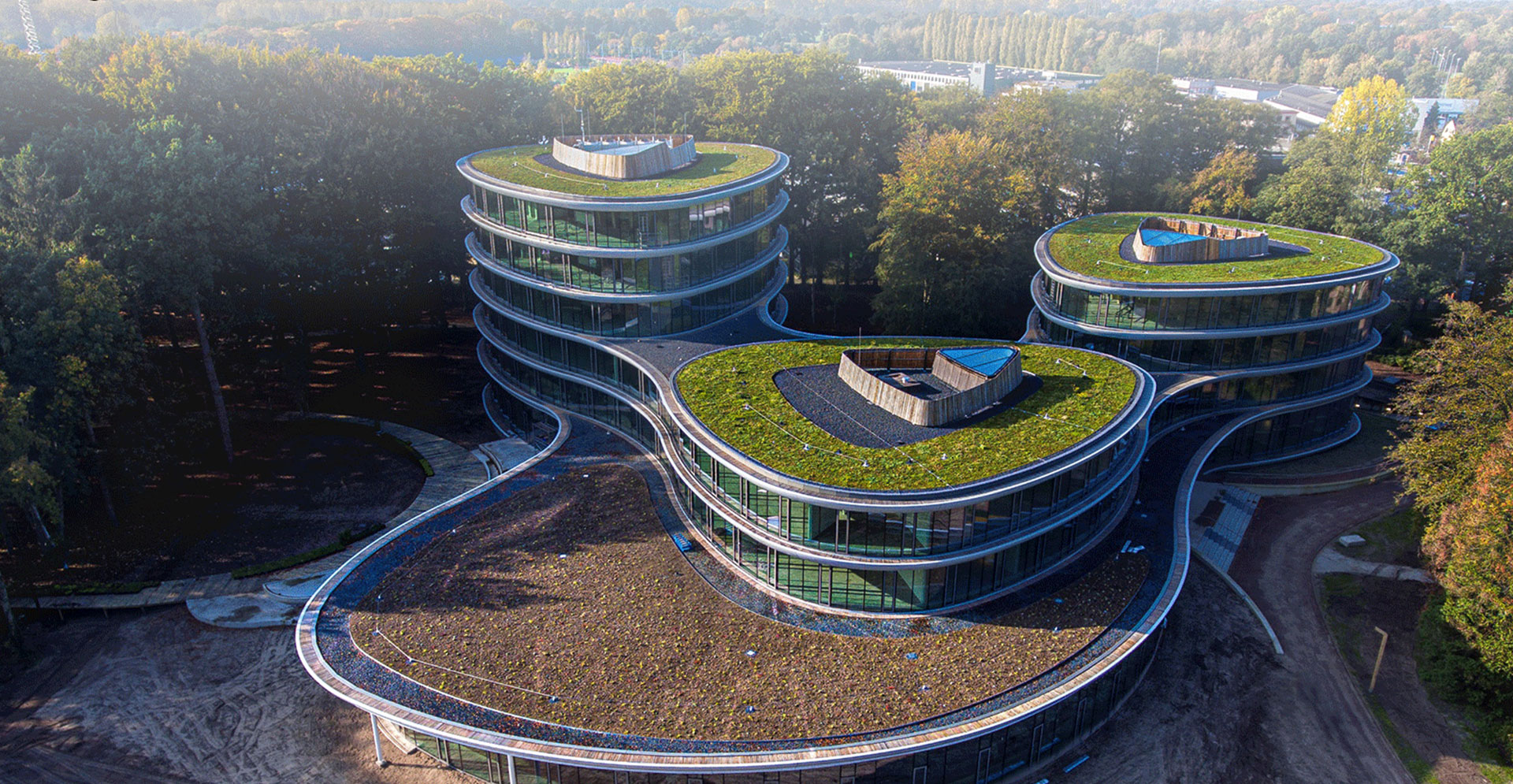To meet the Paris Agreement objectives, the built environment sector needs to reach net-zero emissions across all activities in the building and construction system. Systemic change needs to happen to reduce both operational and embodied carbon. This includes the wider adoption of circular economy principles and nature-based solutions.
Have you ever walked past a construction site and marvelled at the amount of material piled up at the site waiting to be used? Or thought about how far the material could have travelled to get here? Or going beyond that, all the work and transport needed to extract the raw materials for manufacture into products like cement and steel in the first place. Each of these stages require energy consumption which in turn results in the production of greenhouse gas emissions.
These carbon dioxide equivalent (CO2e) emissions that are released during the non-operational phase of a project are known as ‘embodied carbon’. This includes the aforementioned manufacturing and transportation phases but also the construction, maintenance, repair and end of life phases. These emissions contribute around 11% of all global energy-related carbon emissions and 28% of building sector emissions1. In Singapore, where the lifespan of buildings is shorter due to urban renewal, embodied carbon emissions could be higher at up to 40% of building sector emissions2. Moreover, as building operations becomes more efficient and energy sources become greener, embodied carbon is estimated to become the sector’s dominant climate impact driver. For context, the built environment sector is currently responsible for close to 40% of global energy-related carbon emissions3.
With the latest IPCC report sounding the code red for humanity that the window of opportunity for climate action is fast closing, the built environment sector needs to accelerate its efforts in contributing to a net zero carbon world4. This means decarbonizing the whole lifecycle of our built assets, addressing not only operational carbon, but also embodied carbon.
In Singapore, whilst there has been momentum on reducing operational carbon, with the Building and Construction Authority (BCA)’s super low energy program in place since 2018 and the country’s first net zero energy building in the National University of Singapore constructed in 2019, the push for embodied carbon reductions is still in its nascency. Just like operational carbon, tackling embodied carbon requires systemic change and is more complicated than tackling operational carbon, given the multiple stakeholders5 that need to play their part. For example, material manufacturers need to invest in research and development of new low carbon materials and disclose the embodied carbon footprint of their products whilst designers need to publicly share life cycle assessment data and propose best practise embodied carbon reduction measures, including implementing circularity principles1.
Industry organizations such as the Singapore Green Building Council and Urban Land Institute Asia Pacific have both recently launched embodied carbon initiatives to help amplify and unify industry action. Arcadis, with our sustainability ambition to accelerate the transition to a net zero world in a way that improves quality of life for all, is a signatory to both initiatives. We are committed to supporting our clients in their journey towards whole lifecycle decarbonization. Our award winning6 quantity surveying team recognizes that quantity surveyors have the unique opportunity to expand our current service of providing insight on cost drivers, the estimated overall cost of a project, and the current state of the construction materials market, to include the cost of embodied carbon. Given the national and local embodied carbon regulations in Europe7, Arcadis, as a global consultancy, has experience in whole life carbon assessments of projects and we hope to bring that service to more clients in Singapore and the rest of Asia.

Transforming our built environment from the current linear model to a circular one is also key to reducing embodied carbon. The value of materials in buildings can be retained through designing buildings dynamically and flexibly, a concept known as buildings as material banks. An example is Triodos Bank office in Netherlands, one of the world’s first large-scale, 100% wood, reconstructable office buildings. Materials were selected and planned with re-use in mind, and as a building held together by screws, it is possible to dismantle the building without producing waste. Arcadis led the landscape architecture advisory, spatial planning, environmental research and green building (BREEAM) certification.

Lastly, addressing impacts on nature has synergistic effects with climate action and should always be considered. For the NIKE Wings Distribution Center in Belgium for example, Arcadis advised on nature-based solutions to attain no net loss for biodiversity. Arcadis provided consultancy for landscaping, biodiversity measures and biodiversity design. To drive the wider nature positive agenda, Arcadis is also part of the World Business Council for Sustainable Development (WBCSD)’s Nature Action Project, which is developing nature positive roadmaps for various sectors, including the built environment.
A true net zero carbon future is one where all new buildings, infrastructure and renovations are both net zero operational and embodied carbon, just as envisioned in The World Green Building Council’s 2050 target for the industry1. With the adoption of circularity principles and nature positive measures, we can accelerate the transition to a more sustainable future. Because there is no planet B.
This article is as featured on the Orient Magazine Issue 84 by the British Chamber of Commerce, Singapore.
1. Bringing Embodied Carbon Upfront (2019) World Green Building Council
2. In Focus: Is there an environmental cost from Singapore’s love affair with en bloc sales? (2021) Channel News Asia
3. 2020 Global Status Report for Buildings and Construction. Global Alliance for Buildings and Construction
4. How the Built Environment Must Respond to the IPCC’s 2021 Climate Change Report (2021) Arcadis
5. The Building System Carbon Framework (2020) World Business Council for Sustainable Development
6. Arcadis 2nd Consecutive Win as Quantity Surveying Team of the Year at the RICS
7. Decarbonizing Construction: Guidance for Investors and Developers to Reduce Embodied Carbon (2021) World Business Council for Sustainable Development


